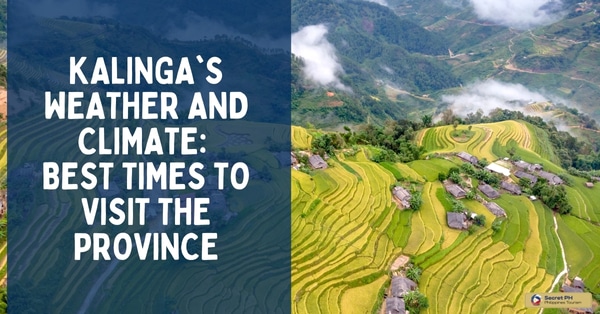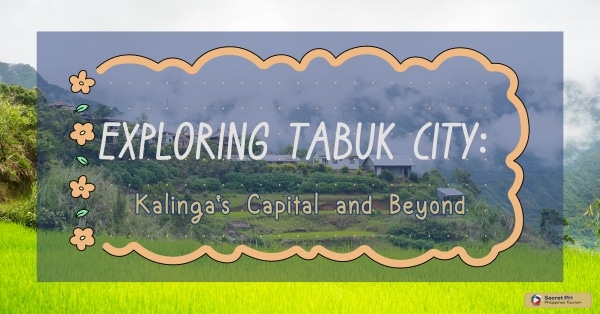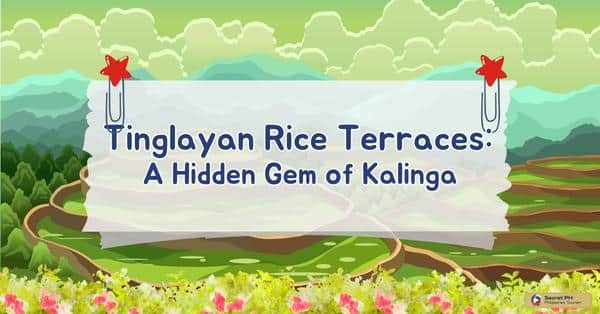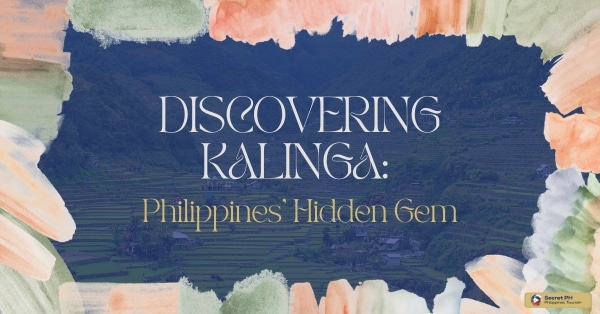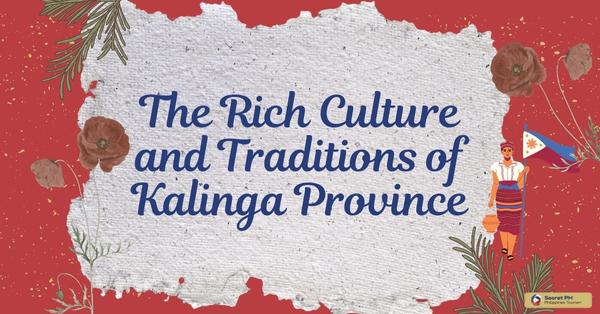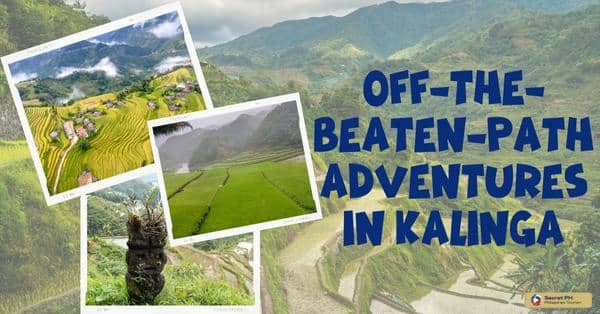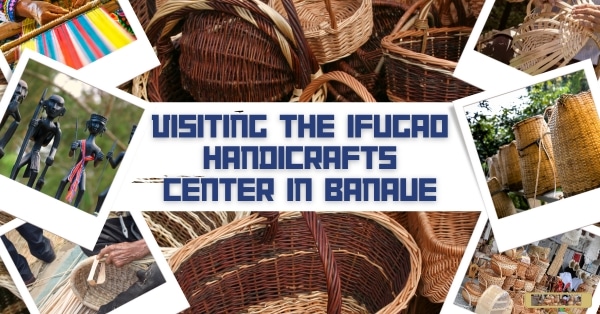Discover Abra, Philippines—a captivating blend of natural wonders, cultural gems, and rich heritage. Immerse yourself in breathtaking landscapes, from cascading waterfalls to lush mountains. Experience vibrant traditions through festivals, historical sites, and mouthwatering culinary delights. Abra awaits, offering a treasure trove of unforgettable experiences in this enchanting province.
This guide will give you everything you need to know to make your trip to Abra an unforgettable experience. From traditional festivals and celebrations to must-visit historical sites and culinary delights, we’ll show you the best of what Abra has to offer. We’ll also provide practical tips for traveling to this beautiful province and uncovering some of Abra’s little-known secrets. So get ready to be inspired, explore, and experience the best of what Abra has to offer!
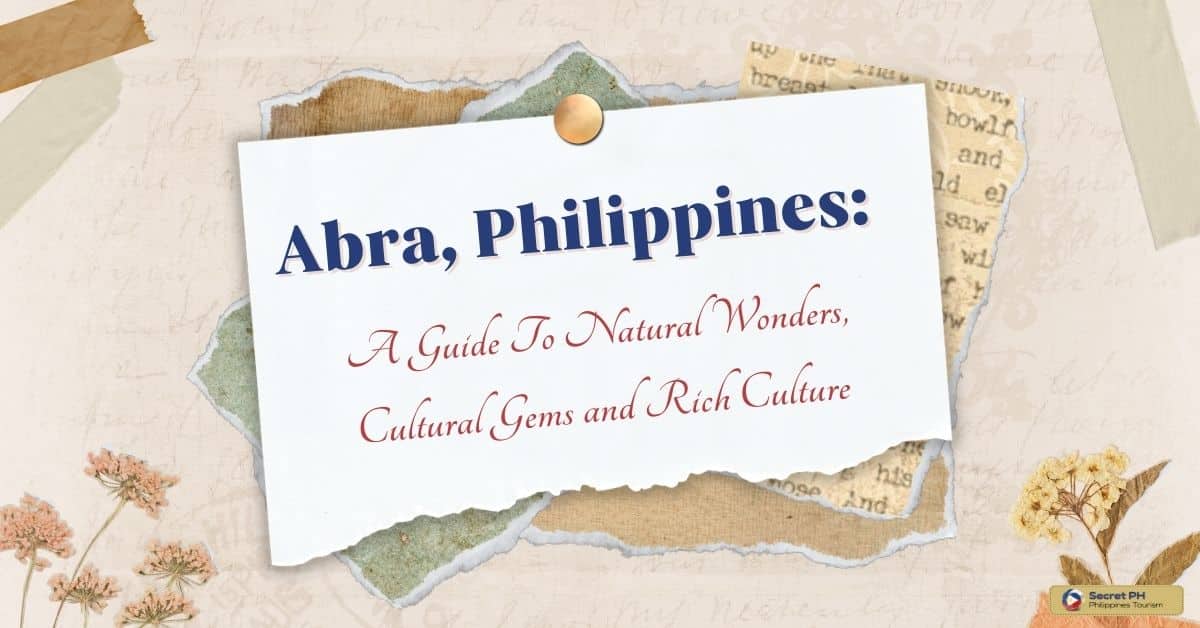
Exploring Abra’s Natural Wonders
Abra is a province located in the northern region of Luzon. Abra is known for its stunning natural wonders that are sure to take your breath away. From towering mountains to pristine rivers, Abra has something for everyone. Don’t miss out on the opportunity to explore this stunning province and its natural wonders.
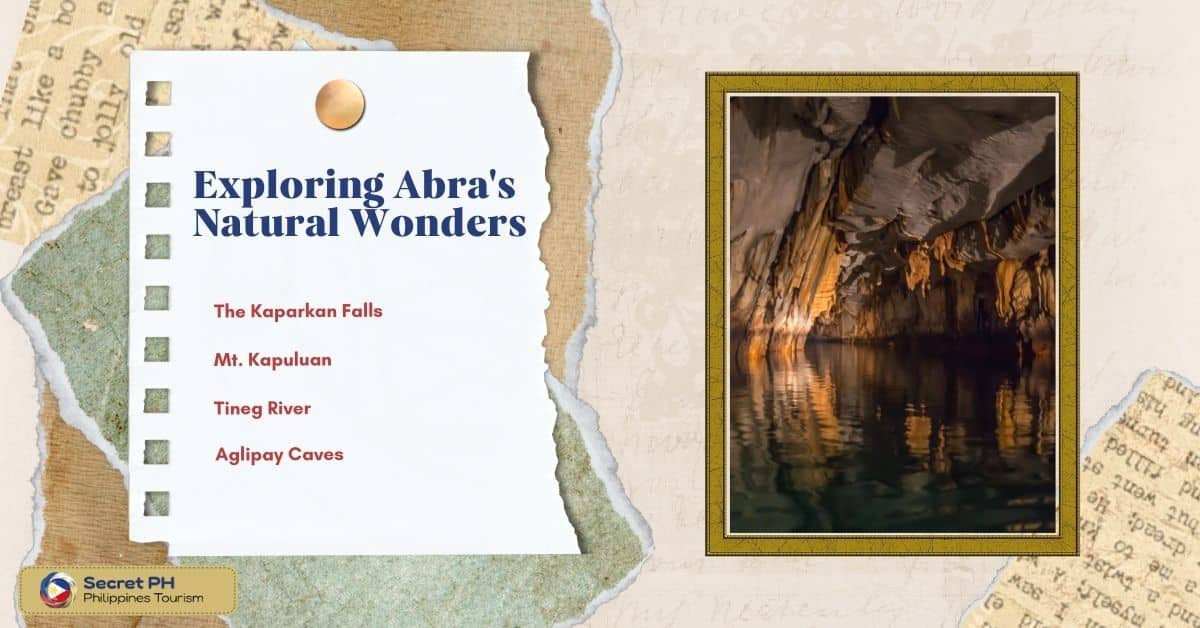
The Kaparkan Falls
One of Abra’s most popular natural attractions is Kaparkan Falls. This breathtaking waterfall is known for its crystal-clear water and picturesque surroundings. Visitors can swim in the refreshing waters or simply relax while taking in the stunning scenery.
Mt. Kapuluan
For the adventurous traveler, Mt. Kapuluan is a must-visit destination in Abra. This towering mountain is a popular spot for hiking and trekking, offering stunning views of Abra’s lush forests and valleys. Visitors can also camp overnight on the mountain to truly immerse themselves in nature.
Tineg River
If you’re looking for a more relaxing experience, consider taking a leisurely boat ride down the Tineg River. The river is surrounded by lush greenery and offers a peaceful escape from the hustle and bustle of everyday life.
Aglipay Caves
The Aglipay Caves are another must-see destination in Abra. These ancient caves are filled with stunning rock formations and offer a glimpse into the province’s rich history and culture. Visitors can explore the caves with a guide and learn about the stories and legends associated with each formation.
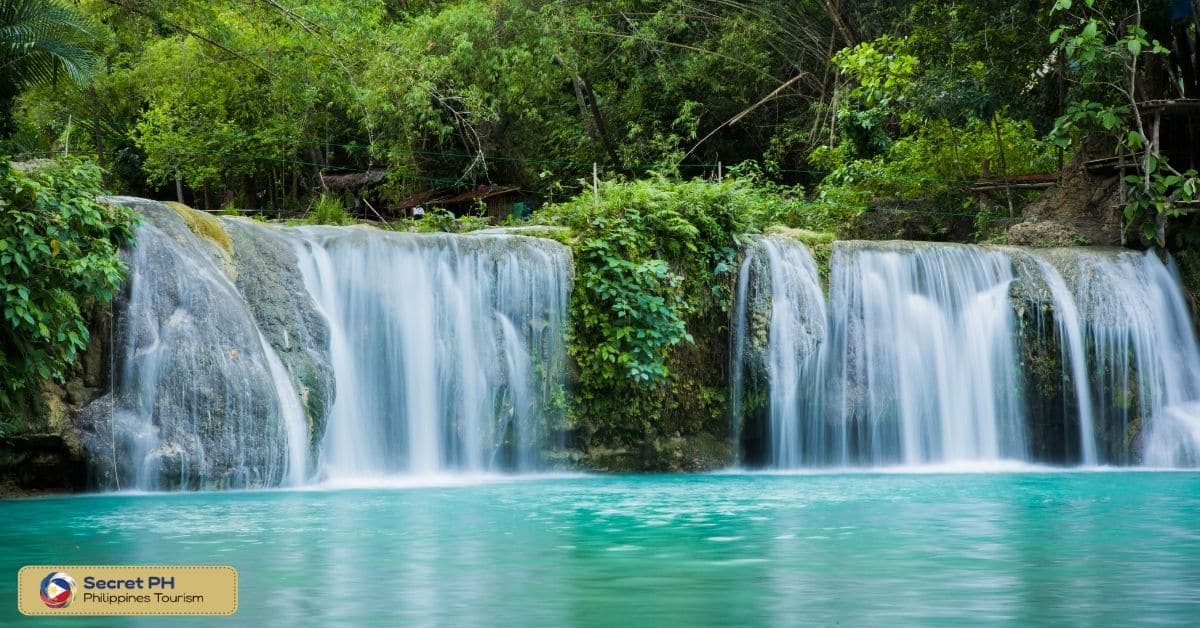
Discovering Abra’s Cultural Gems
Abra may not be as well-known as other tourist destinations in the Philippines, but it is certainly worth a visit for those interested in experiencing the country’s rich cultural heritage. From festivals to historic landmarks, Abra has something to offer everyone.
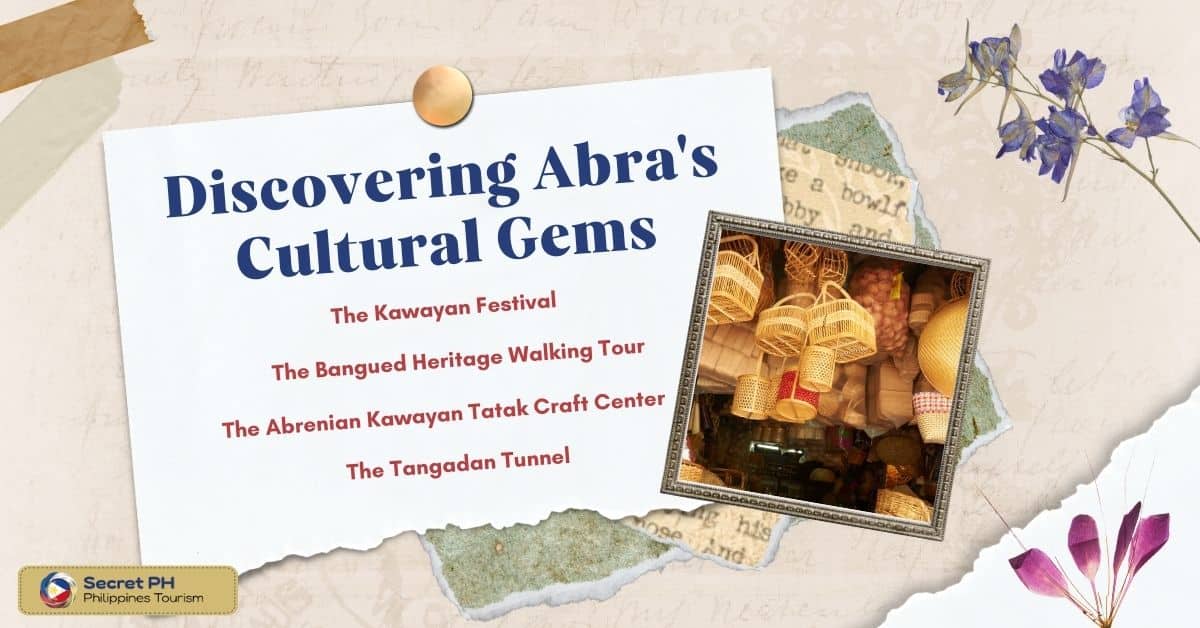
The Kawayan Festival
One of Abra’s most popular cultural events is the Kawayan Festival, held every March 21-23 in the town of La Paz. The festival celebrates bamboo, which is abundant in the region and used for various purposes, from construction to handicrafts. Visitors can enjoy traditional dances, music, food, and games, all featuring bamboo as the central theme.
The Bangued Heritage Walking Tour
For history buffs, the Bangued Heritage Walking Tour is a must-do activity. This guided tour takes visitors through the picturesque town of Bangued, which is known for its well-preserved colonial-era architecture. Highlights include the century-old St. James the Greater Cathedral, the old Provincial Capitol building, and the historic Calaba Bridge.
The Abrenian Kawayan Tatak Craft Center
Located in Bangued, the Abrenian Kawayan Tatak Craft Center showcases the intricate artistry of Abra’s bamboo craftsmen. Visitors can watch artisans at work, creating beautiful and functional pieces such as baskets, furniture, and even musical instruments. The center also holds workshops where visitors can learn the basics of bamboo weaving and other traditional crafts.
The Tangadan Tunnel
The Tangadan Tunnel is not just a marvel of engineering, but also an important piece of Abra’s history. Built during the American colonial period, this tunnel served as a crucial transportation link between Abra and other parts of Luzon. Today, it is a popular destination for visitors who want to learn about the region’s history and take in the stunning views of the surrounding mountains.
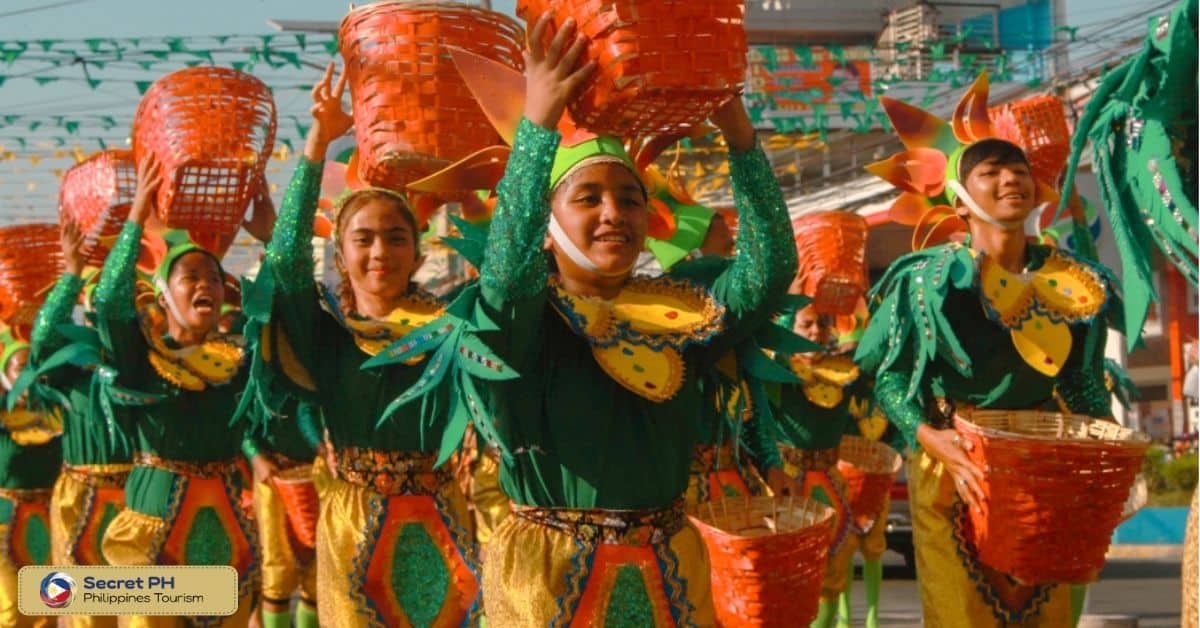
Immerse Yourself in Abra’s Rich Culture
Abra offers a captivating and enriching cultural experience for visitors. From age-old practices to colorful celebrations, Abra’s rich culture invites you to delve into its unique traditions, customs, and heritage. The warmth and hospitality of the locals add an extra layer of authenticity to your immersion, making your journey through Abra’s rich culture truly unforgettable.
As you explore Abra, you’ll have the opportunity to witness traditional festivals and celebrations that showcase the province’s vibrant spirit. From the lively Kawayan Festival to the fascinating Dayaw ti Kultura, these events offer a glimpse into Abra’s cultural tapestry, allowing you to participate in age-old rituals, enjoy traditional dances and music, and savor local delicacies.
Additionally, Abra’s historical sites and landmarks, such as the Tayum Church and the Malibcong Rice Terraces, provide a window into the province’s past, telling stories of resilience, artistry, and architectural marvels. Immerse yourself in Abra’s rich culture, and you’ll be rewarded with a deep appreciation for the traditions, heritage, and the vibrant people who proudly call this province home.
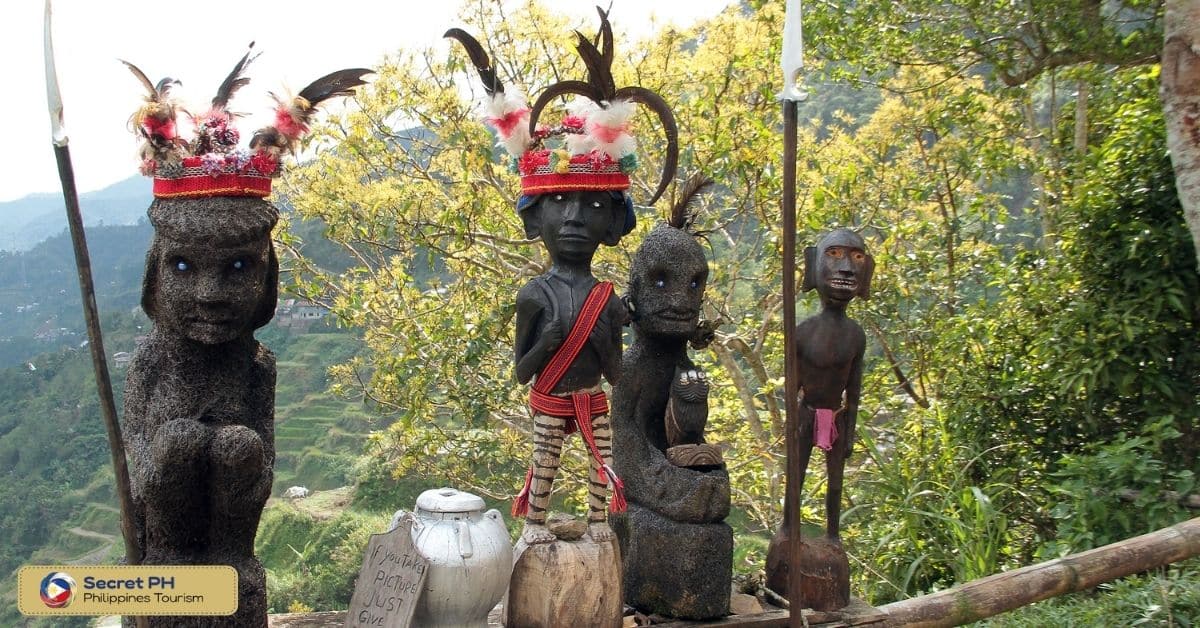
Must-Visit Historical Sites in Abra
Abra province is known for its scenic landscapes and diverse cultural heritage that dates back to pre-colonial times. Abra is also home to a number of historical sites worth visiting for those who want to delve deeper into the province’s past. In this article, we’ll highlight some must-visit historical sites in Abra.
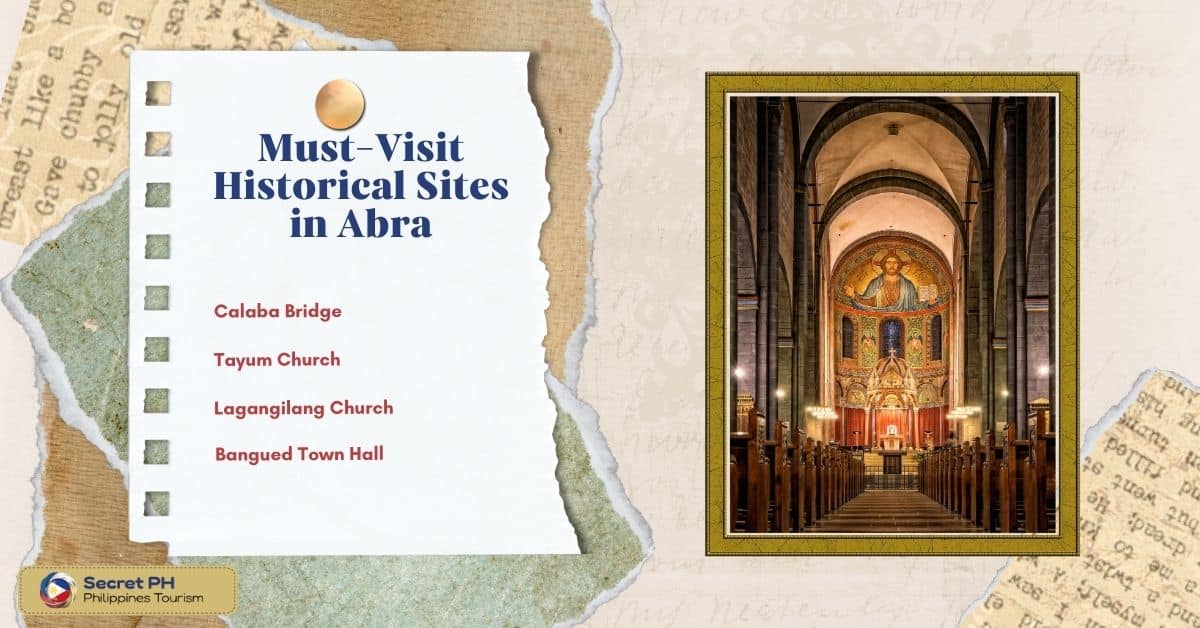
Calaba Bridge
The Calaba Bridge is one of the oldest bridges in the Philippines and is considered as a national historic site. Built in 1905, this bridge is made of steel and spans across the Abra River. It served as an important transportation route between the Ilocos and Cordillera regions during the Spanish colonial period.
Tayum Church
The Tayum Church, also known as the St. Catherine of Alexandria Parish Church, is a Baroque-style church built in the 1800s. It has been declared as a National Cultural Treasure by the Philippine government and is known for its intricate carvings and ornate details.
Lagangilang Church
The Lagangilang Church, dedicated to St. Michael the Archangel, is another Baroque-style church in Abra. Built in 1785, it has been recognized as a National Historical Landmark by the National Historical Commission of the Philippines. The church features a bell tower that is separate from the main structure and is known for its impressive architecture.
Bangued Town Hall
The Bangued Town Hall, also known as the Provincial Capitol Building, was built in 1846 and served as the seat of government during the Spanish colonial period. It is a two-story building made of brick and wood, with a distinctive architectural style that reflects the province’s mixed cultural influences.
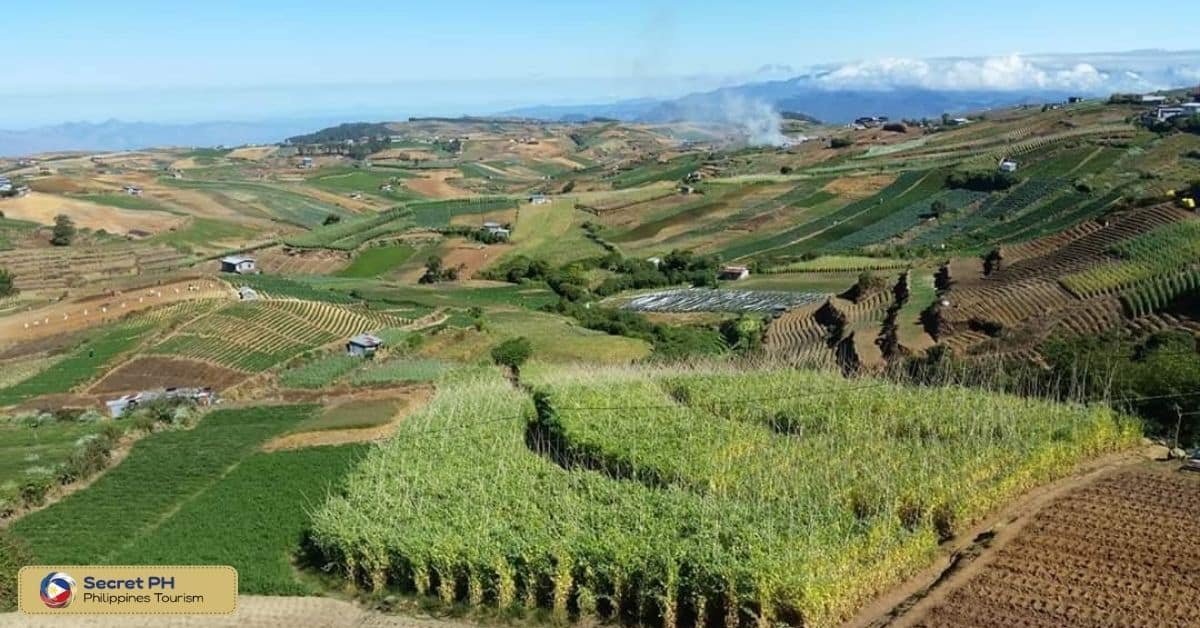
Experiencing Abra’s Culinary Delights
Abra is a haven for food enthusiasts seeking to explore a rich tapestry of flavors and culinary traditions. From hearty and savory dishes to delightful desserts, Abra’s cuisine offers a diverse range of culinary delights that showcase the region’s unique cultural heritage. Embark on a gastronomic adventure and indulge in the mouthwatering flavors of Abra’s local cuisine.
Here’s a list of must-try dishes and delicacies when experiencing Abra’s culinary delights:
1. Pakbet – a classic Ilocano vegetable dish made with a mix of sautéed vegetables such as eggplant, bitter melon, squash, okra, and string beans.
2. Pinikpikan – a unique chicken dish that involves beating the live chicken until it is bruised before cooking it in a pot with ginger and onions.
3. Kinalas – a noodle soup dish made with thick noodles, pork broth, and topped with chicharon (fried pork rinds), boiled pork and egg.
4. Tupig – a glutinous rice cake wrapped in banana leaves and grilled to perfection, usually served as a snack or dessert.
5. Bas-i – an alcoholic beverage made from sugarcane and rice that has a distinct sweet taste and is usually consumed during special occasions.
6. Tamales – a sweet rice cake made with coconut milk, sugar, and peanuts, usually wrapped in banana leaves.
7. Abra Longganisa- Delight in the province’s own version of longganisa, a Filipino sausage, seasoned with local spices and flavors, perfect for breakfast or any meal.

Outdoor Activities and Adventures in Abra
Abra is known for its natural beauty and breathtaking landscapes. With its picturesque mountains, pristine rivers, and stunning waterfalls, Abra offers a variety of exciting outdoor activities and adventures for those who seek to explore and experience the beauty of nature.
Here are some of the top outdoor activities and adventures you can enjoy in Abra:
Trekking and hiking at Mt. Kaparkan: Mt. Kaparkan is a popular destination for trekkers and hikers. The mountain offers various trails that lead to the summit where you can enjoy amazing views of the surrounding landscape.
River rafting and kayaking at Abra River: Abra River is one of the longest and widest rivers in the country. It offers an exhilarating experience for adventure seekers who want to try river rafting and kayaking.
Swimming and cliff jumping at Tugot ni Angalo: Tugot ni Angalo is a hidden gem in Abra, featuring a series of cascading waterfalls with crystal-clear pools. You can swim or dive from the top of the falls for an adrenaline-pumping experience.
Rock climbing at Tangadan Falls: Tangadan Falls is a popular spot for rock climbers. The falls offer challenging routes for climbers of all levels, with stunning views of the falls and surrounding landscape.
Camping and stargazing at Lusuac Spring: Lusuac Spring is a natural spring located on the outskirts of Bangued town. The area is perfect for camping and stargazing, with a clear view of the night sky.

Abra’s Indigenous Communities and Traditions
Abra is home to various ethnic groups, including the Kankanaey, Banao, Ilocano, and Tingguian, who have preserved their Indigenous traditions and cultures through the years. These communities have unique practices and beliefs that reflect their way of life, which are worth exploring and understanding.
Indigenous Communities
Abra has several Indigenous communities that have retained their traditional customs and practices. One of the largest groups is the Kankanaey, who are known for their farming practices and weaving skills. They believe in anito or ancestral spirits and perform rituals to honor them.
Another community is the Banao, who are skilled in basket weaving and wood carving. They have their own dialect and customs that set them apart from other groups in the region. The Tingguians, on the other hand, are known for their intricate beadwork and embroidery, as well as their unique burial practices.
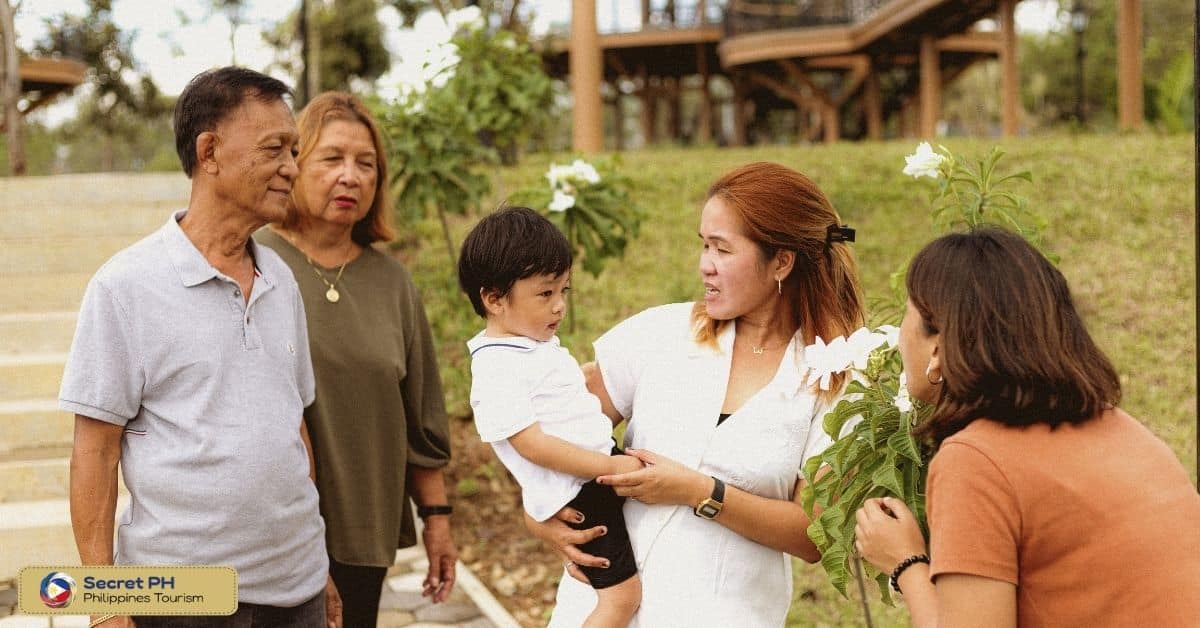
Traditions
The Indigenous communities in Abra have various traditions that have been passed down from generation to generation. One of the most significant is the pagta or the community work system where members of the village come together to build houses, repair roads, and cultivate farms. This tradition fosters cooperation and unity among the members of the community.
Another important tradition is the sagipen, a ritual performed by the Tingguians to honor their dead. During this ceremony, the family of the deceased prepares a feast and invites the entire community to join them in remembering their loved one. This tradition highlights the importance of community support during difficult times.
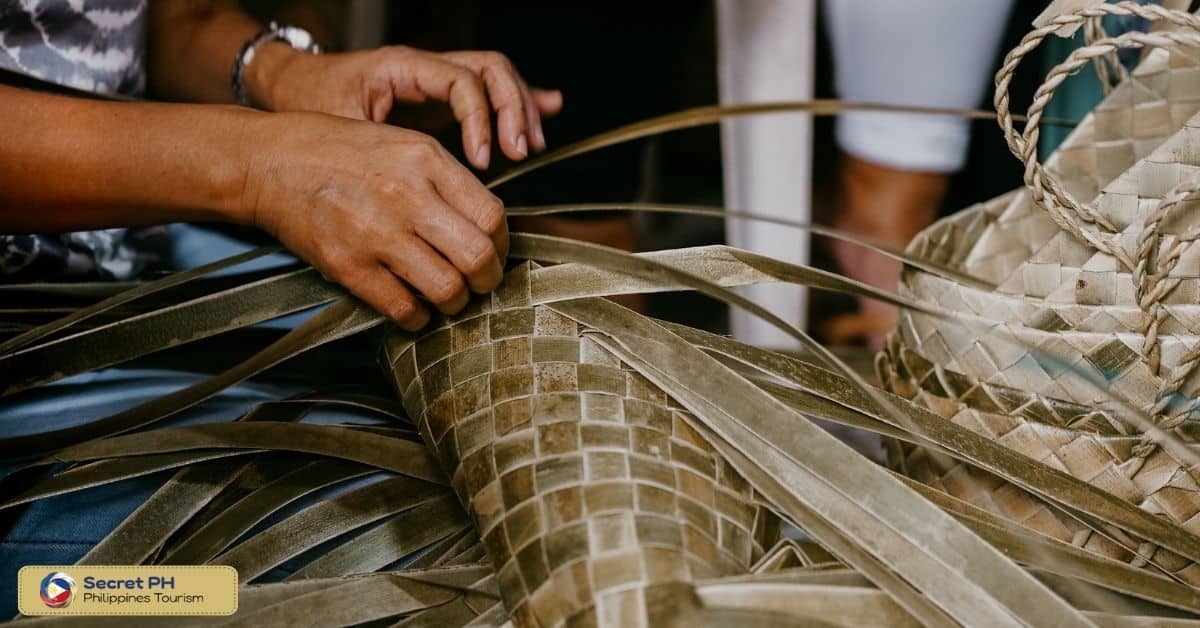
Practical Tips for Traveling to Abra, Philippines
Traveling to Abra offers a wealth of natural wonders, cultural experiences, and adventure. To ensure a smooth and enjoyable trip, it’s helpful to be aware of some practical tips specific to visiting Abra. From transportation to safety considerations, these tips will help you make the most of your journey and ensure a memorable experience in this captivating province.
Research and Plan Ahead: Familiarize yourself with Abra’s attractions, weather conditions, and local customs before your trip to maximize your time and make informed decisions.
Best Time to Visit: Consider visiting Abra during the dry season, typically from November to April, to avoid heavy rains and enjoy pleasant weather for outdoor activities.
Transportation: Plan your transportation options in advance, whether by private car, public buses, or hired vans, as this will make it easier to navigate the province and reach your desired destinations.
Accommodation: Book your accommodations ahead of time, especially during peak seasons, to secure your preferred lodging options and ensure a comfortable stay.
Pack Accordingly: Pack lightweight and breathable clothing suitable for the tropical climate of Abra. Don’t forget essentials like sunscreen, insect repellent, comfortable walking shoes, and a reusable water bottle.
Stay Hydrated and Mindful of Food: Drink bottled water and be cautious of street food hygiene. Opt for cooked and freshly prepared meals from reputable establishments to avoid any stomach discomfort.
Learn Basic Local Phrases: While English is spoken in many tourist areas, learning a few basic phrases in the local language, such as greetings and thank you, can go a long way in connecting with locals and showing respect.
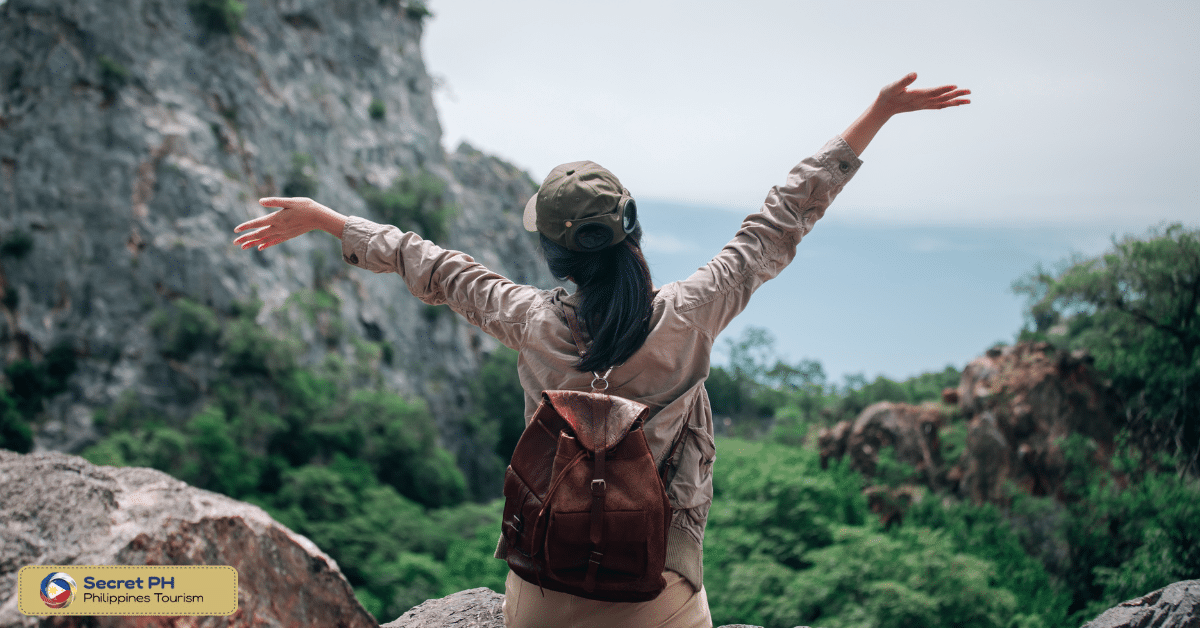
In conclusion
Abra is an enchanting province filled with breathtaking landscapes, fascinating culture, and unique experiences. With its diverse range of attractions, activities, and culinary delights, Abra offers something for everyone to enjoy. Embark on a journey to Abra and explore its natural wonders and cultural heritage.
Whether you want to go trekking in the mountains, swimming in the waterfalls, or savoring delicious local dishes – you’ll certainly have a memorable and unforgettable experience. So plan your trip to Abra today and be prepared to explore one of the Philippines’ most remarkable places.

